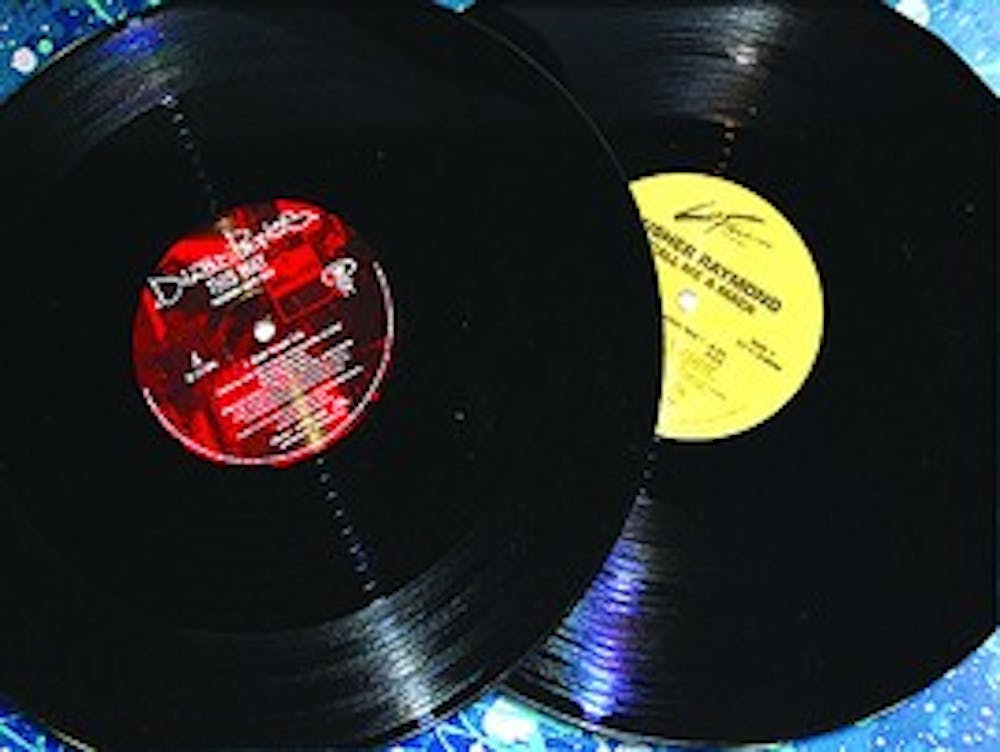Downloaded music is killing the CD. Years ago, the CD killed the cassette. Even before that, cassettes killed the vinyl record. But it's not that simple.
In 2007, compact disc sales were down more than 20 percent from the previous year, according to the Recording Industry Association of America. However, sales of the supposedly obsolete vinyl format spiked more than 46 percent during the same period.
Of course, saying vinyl is gaining on the still-colossal CD market is like saying soccer is gaining on football in U.S. television viewership. Still, major label EMI cites "strong retail and consumer demand" as the impetus for the launch of its deluxe "From The Capitol Vaults" line of new vinyl re-releases, and similar campaigns are beginning at other major record labels.
Even big bookstore chains, such as Barnes and Noble, are getting in on the action in what used to be a specialty market.
The format is having a renaissance. The question is, why?
The huge plastic discs are totally impractical. Any substantial number of albums seems to weigh as much as all the textbooks you've ever purchased. Most decent turntables cost more than a hundred dollars and require expensive amplifiers. The previous trend in music formats seems to suggest that portability and low cost are everything. Yet vinyl suddenly seems to be everywhere again.
The burgeoning vinyl renaissance even seems to be making some inroads at AU. AU's vinyl collection, housed in the lonely far corner of the library's lowest level, has experienced more circulation in the past year than any other time in recent memory, according to Nobue Matsuoka-Motley, the university's music librarian. Most of the library collection's users are music students who "prefer CDs over vinyl because of convenience," she said.
However, some of AU's vinyl holdings are not available on CD, making the records extremely useful. While the collection focuses on classical music and showtunes used in the performing arts program, it does include many popular recordings obtained through donation and is open to all students.
While the resurging circulation of AU's vinyl library is still small, the growing vinyl culture at the university is not. Both students and professors are getting into the game in the dorms and off-campus.
"Though I have hundreds of CDs and MP3 files," said College of Arts and Sciences professor and vinyl aficionado Glenn Moomau, "I still have some of the first LPs I bought in the mid-70s, and [I] still buy used vinyl today."
Sami Norling, a sophomore in CAS, said he is into the discs.
"I actually have a record player and a vinyl collection in my [dorm] room," she said.
But why? Why is this obsolete format experiencing a renaissance on campus and off? Why go through the trouble of setting up an expensive turntable and schlepping around a heavy collection of vinyl when hundreds of songs will fit in your pocket through the magic of MP3?
"Vinyl is awesome," said Emerson Williams, a senior in CAS. "It has that old classic sound of actual analog audio."
Analog is warm and wide, Moomau said.
"Digital is compressed to the point that MP3 recordings sound brittle, even tinny compared to analog," he said.
It's not just the sound quality, though.
"There's something about vinyl," said Dewey Musante, a sophomore in CAS. "Something about the way it smells."
And something about the way it looks. And feels. There is a mystique around vinyl. In a culture in which everything old is new again and faux-vintage purveyors like Urban Outfitters are making a fortune off of the style of decades past, it seems logical that an older format would gain credit within that burgeoning subculture.
But the mystique of the vinyl disc is more than that. It crosses generational and ideological gaps. It seems impossible to completely explain. In fact, the small current rebirth of the format seems to be, at its core, illogical. Once the purview of audiophiles and music history nerds, vinyl is slowly infiltrating all kinds of circles.
Sure, it may never replace downloaded music, as CAS senior Danielle Quinn predicted, but this dead format seems to have experienced a sort of resurrection and, if the shifting sales numbers are any indication, it may be here to stay even as its evolutionary predecessors slowly fall by the wayside.
You can reach this writer at thescene@theeagleonline.com.





